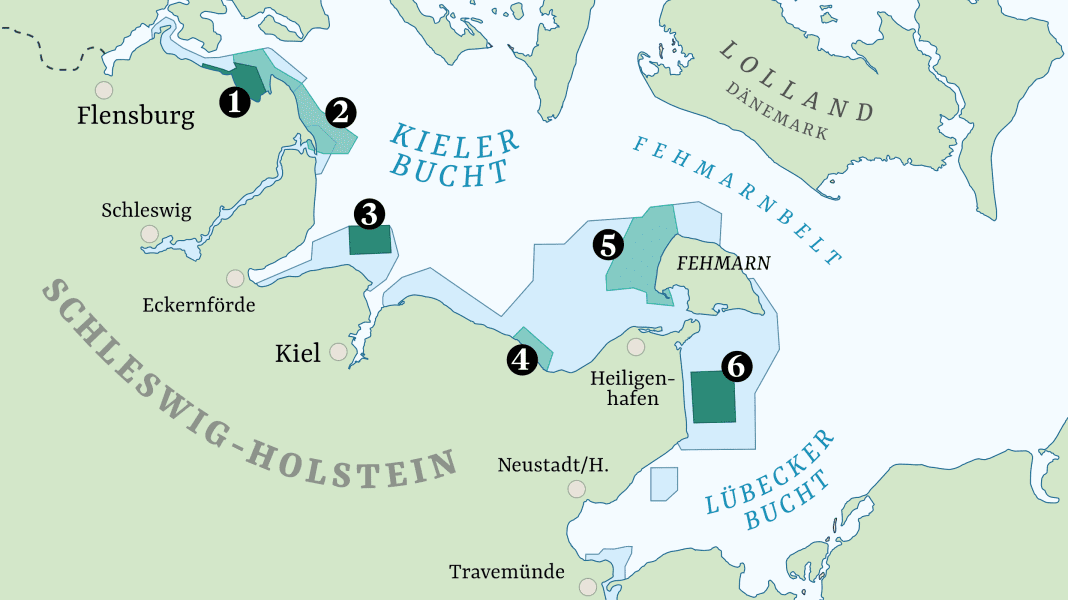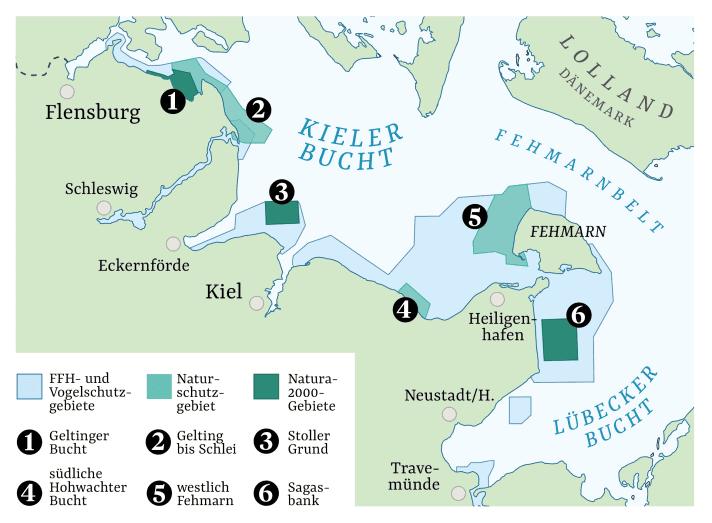Baltic Sea Protection Action Plan: No year-round navigation bans for water sports enthusiasts

The result of the consultation process is the "Baltic Sea Protection Action Plan 2030". According to the state government's paper, the initiative will now "promote area-based marine nature conservation by taking specific conservation measures related to the respective activity in selected protected areas".
Speed limit for motorised water sports only
First things first: the 16-point plan that has now been presented does contain far-reaching restrictions for the strictly protected areas. However, these mainly concern fishing and the reduction of nutrient inputs. In terms of water sports, there are fewer restrictions than many water sports enthusiasts initially feared. In the new nature conservation areas, the use of watercraft or water sports equipment outside the zones designated for water sports is only prohibited in the months of November to March. Sailing, kiting and surfing are therefore only possible in these zones during this period. The new navigation regulations in these strictly protected areas include a year-round speed restriction for motorised water sports to reduce underwater noise. Apart from this, anchoring in seagrass beds will not be permitted in these areas. Agricultural and forestry areas are excluded from the areas, as are recreational boat harbours, which should continue to be accessible from the water all year round. Bathing, swimming, diving and beach use will remain permitted to the same extent as before.
Three new marine nature reserves
A total of 12.5 % of Schleswig-Holstein's Baltic Sea coast is under strict protection in order to create retreats and resting areas for animals and plants (see map).

This is a much smaller area than originally envisaged when planning the national park. This would have roughly corresponded to the boundaries of the bird sanctuaries and FFH areas (coloured light blue on the map). The three new marine nature conservation areas west of Fehmarn, Gelting to Schlei and south of Hohwachter Bucht account for eight per cent of the Baltic Sea. In addition, three areas of the already designated Natura 2000 sites will be given stricter protection status. These are located at Sagasbank, Stoller Grund and Geltinger Bucht and account for a further 4.5 per cent of the Baltic Sea.
The biggest changes concern fishing: in all strictly protected areas, all fishing is prohibited, including recreational fishing, with the exception of beach fishing. Industrial fishing will be completely prohibited. Other measures in the action plan are aimed at reducing nutrient discharges into the Baltic Sea and the removal of munitions and waste from the Baltic Sea. In addition, an "Integrated Baltic Sea Station" will be set up for effective protected area management and environmental education work on site. Active protection measures such as the creation of reef structures, the establishment of seagrass meadows and mussel beds as well as the restoration of coastal lagoons are also part of the initiative. The state government would also like to "involve local stakeholders such as municipalities, tourism operators, water sports enthusiasts, land users, companies and their associations and chambers through a partner programme and thus promote a comprehensive awareness of the protection and conservation of the Baltic Sea", according to the action plan.
The Baltic Sea Protection Action Plan 2030 is a real milestone. It will significantly improve the state of the Baltic Sea
said Minister President Günther. "The North Sea and Baltic Sea are home to a wide range of interests that secure their existence," said Günther. "These include fishing, shipping, coastal protection, tourism, sport and recreation. On the one hand, they have a significant impact on the marine ecosystem, but on the other, they are at least partially dependent on an intact ecosystem. We need to harmonise this, and I am certain that we will succeed with the Baltic Sea Protection Action Plan 2030."
As far as the timeframe for implementing the measures is concerned, the Ministry of the Environment stated in response to a query that the designation of the nature conservation areas and thus the entry into force of the new navigation ordinance may still take around one to two years.
All information on the Baltic Sea Protection Action Plan 2030 and the 16 points of measures can be found at www.schleswig-holstein.de/ostseeschutz
Matching:
- Baltic Sea National Park: Possible exclusion zones through the back door?
- Baltic Sea National Park: Final report on the consultation process published
- How the final meeting on the Baltic Sea National Park went
- Fears of closures through the back door
- Baltic Sea National Park on the brink of collapse - CDU to vote against Goldschmidt plans
